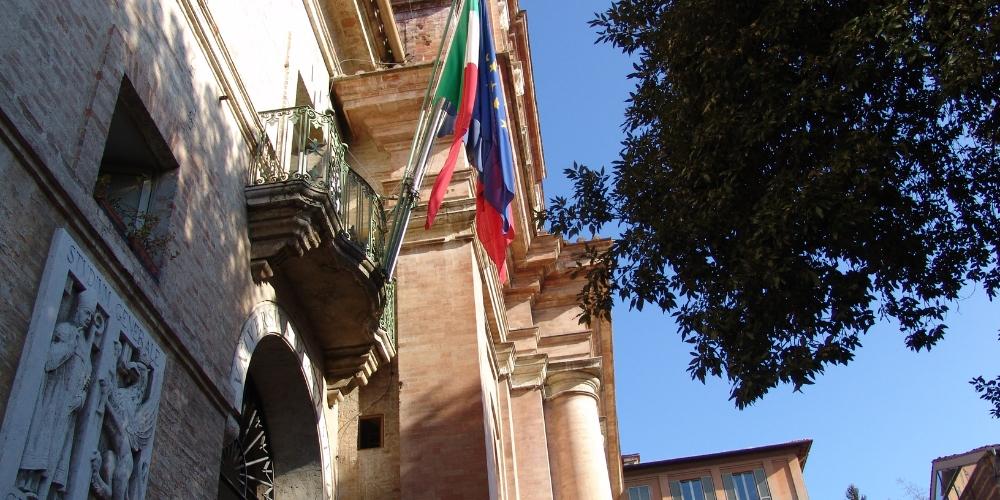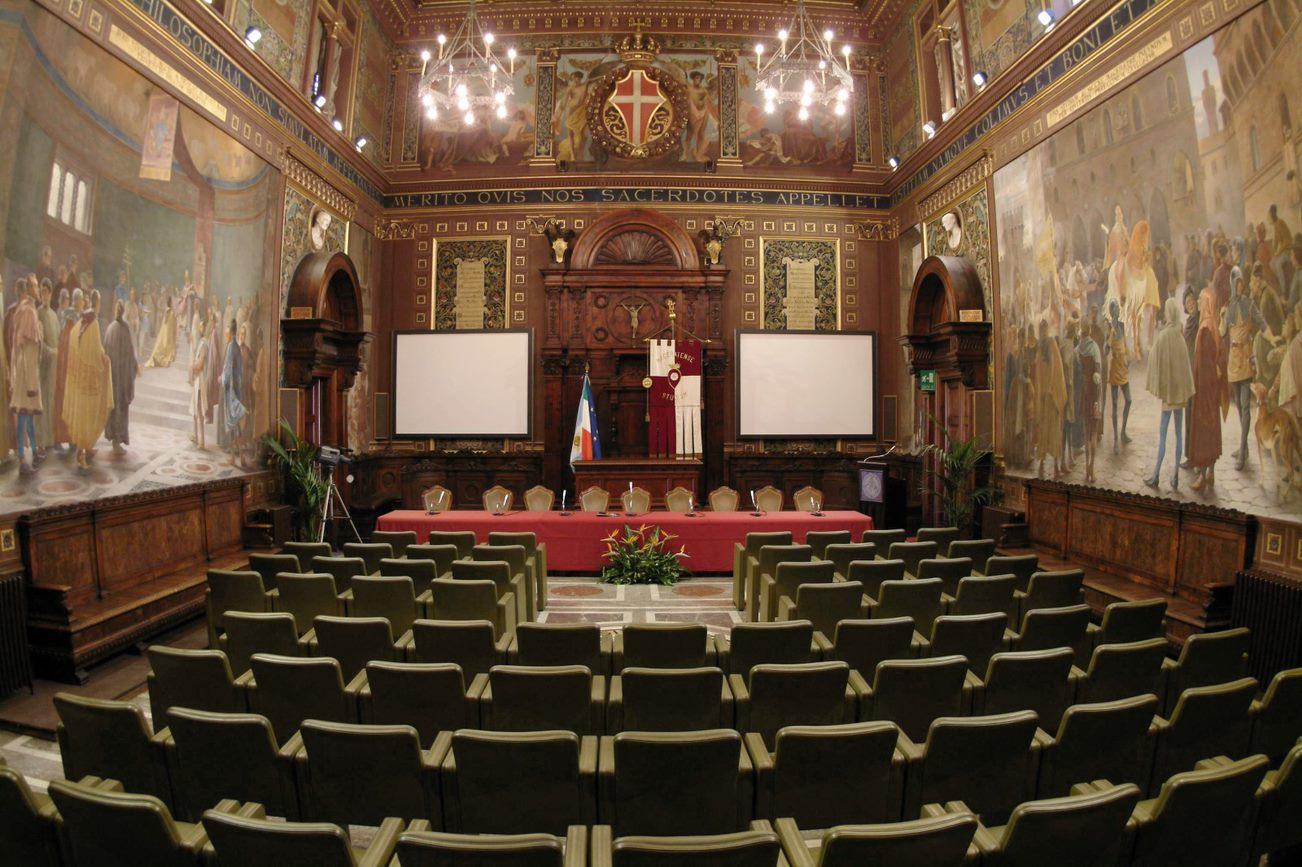Prior to the creation of universities, there were only three methods of study: the one applied by preceptors in noble houses; the religious one used in convents and religious institutes; and finally, the philosophical one, understood as an aggregation of followers who discussed the doctrine of a common master.
At the beginning of the last millennium, in Europe there was a need for freer forms of association that would allow the fluid diffusion of knowledge and the exchange of information and reflections. Numerous universities flourished in Italy, some through a spontaneous movement of people, others sponsored by sovereigns or municipalities.
Today, these universities are still in operation and are the Alma Mater of many Italian and foreign students who still walk the same corridors and listen to lectures in the same classrooms as young people did almost 1,000 years ago. Let us see together which are the oldest universities in Italy that are also among the most archaic in Europe

7. Most ancient universities in Italy: University of Studies of Perugia

Already by the end of the 13th century, the city of Perugia was aware of the importance of creating an Athenaeum that would bring prestige to its name and contribute to its social and cultural advancement. Work on the creation of an Athenaeum recognised throughout Europe began as early as 1285 and was completed in 1308 with the bull issued by Pope Clement V. This foundation date places it thirteenth among the oldest universities in Europe and seventh in Italy.
In 1355, the definitive crowning of the city's efforts to create its university took place when Charles V granted formal imperial recognition to the University of Studies of Perugia. Even today you can see the foundation bull together with Charles V's diploma walled into the façade of the Palazzo dei Priori.
During the following century, the management of the University remained in papal hands, except for a brief period when it was run by Gian Galeazzo Visconti. Throughout the 16th century, there was a progressive accentuation of clerical interference in the affairs of the University, which was in fact deprived of any form of autonomy.
To begin to see the first glimmers of a free and self-governing university we must wait until the end of the 17th century and then throughout the 18th century when a real revolution in scientific thought and freedom of thought took place. The achievements of this century were, however, short-lived: during the 1800s, in fact, the local governing bodies were replaced in the management of the university by a pontifical monarchy, thus managed directly from Rome. Even the experience of the French Revolution failed to undermine the power of the curia: it took the Napoleonic Empire to free the University of Perugia from the influence of the Church.
Today, the University of Perugia is free, independent, and projected into the future. The location of the University in a city so rich in art, history and culture attracts students from all over the world and makes it not only one of the most desirable in Italy, but also an institution perfectly integrated with its host city
6. La Sapienza University of Rome between the most ancient universities in Italy
.jpg)
One of the most interesting universities in Italy is La Sapienza in Rome, which ranks twelfth in Europe and sixth in Italy for antiquity. Having reached this point, we can note that in the 14th century, one out of every two universities in Europe was Italian.
La Sapienza was founded in 1303 by Pope Boniface VIII with the bull in suprema dignitatis. Due to its proximity to the papal seat, this Athenaeum was at the centre of the history of papal Italy and later became an autonomous and prestigious centre of studies. The main seat was soon moved outside the Vatican walls, close enough to the clerical seat but still in a place accessible to students from all over the world who wished to study in the Eternal City. When the premises in Trastevere were no longer sufficient, new buildings were acquired between Piazza Navona and the Pantheon, where the State Archives are today.
At the beginning of the 16th century, the son of Lorenzo de Medici became pope with the name Leo X. this gave a strong impetus to university development, especially favouring anatomy studies. A century later, the amazing Alexandrian library was founded: papal envoys were sent to the East to find texts, volumes, and grammar to increase world knowledge.
In 1789 the spirit of the French Revolution arrived in Rome and the Roman Republic was created. For the university, it meant a greater quest for autonomy from pre-established power. However, until the mid-1800s La Sapienza remained under the influence of political and religious power: it was only with the Unification of Italy and the removal of the clerics from political interference that the University of Rome was able to gain a certain autonomy and initiate reforms.
The First World War saw the University of Rome take up interventionist positions, so much so that at the end of the conflict an honorary degree was awarded to all students who had fallen in battle. Later, the fascist regime, which considered universities privileged places for propaganda, imposed the obligation to swear an oath to the Duce on all professors: out of 1200 professors throughout Italy, only 12 had the courage to refuse. Several Nobel Prize winners from La Sapienza, after receiving recognition in Stockholm, migrated to more liberal countries such as Enrico Fermi, Emisio Segrè and Franco Modigliani.
After the Second World War, the University of Rome was at the centre of numerous student struggles for civil rights that culminated in 1969 with the liberalisation of access to the university for anyone who wanted it. In the last years of the 20th century, massive affluence led to the creation of two other universities in Rome, Tor Vergata and Roma Tre.
5. The University of Macerata, the evolution of a small university

The earliest surviving information on the foundation of the University of Macerata dates to 1290 and concerns a course in law. This places the small university in the Marche region in fifth place among the oldest universities in Italy and ninth among the first universities founded in Europe. The official inauguration, however, did not take place until 1540 in the presence of Pope Paul III: the Faculty of Theology at Macerata, despite its small size, was in fact one of the most prestigious in existence.
With the birth of the Kingdom of Italy, growing secularism led to the closure of the Faculty of Theology and the expansion of the Faculty of Law: an important turning point. In the early post-war period, the University of Macerata underwent a significant expansion, thanks to which the humanities faculties also found a place.
.
To date, the University of Macerata is certainly one of the most authoritative universities in Italy. The library system boasts a total patrimony of more than 600,000 volumes with some works dating back to the 18th century. In 2004, the University created its own publishing house, Edizioni Università di Macerata.
4. the University of Siena and the Triumph of the Communal Model

In the ranking of the oldest universities in Italy, we find the University of Siena in fourth place. In this Tuscan city, we find a further model of university foundation: not the student foundation as in Bologna and Padua, not the seigniorial one of Naples, but a purely communal birth. The citizens of Siena in the 1240s rented their houses to students, paying a tax to the university, which paid teachers with that income. When many students moved to Siena from Bologna a century later, the Commune realised that this could be an important opportunity for the city and began to invest in the Sienese Studio.
In 1357, the University of Siena was included in the official list of the Universities of the Holy Roman Empire, and this brought the best lecturers in Europe to Tuscany. The growth continued until 1555 when the Republic of Siena fell under Medici rule: the doors of the Athenaeum remained open, but the ancient splendour was lost.
During the Napoleonic conquests, the Sienese Studio was closed, and it was necessary to wait until the Restoration years for it to become operational again. During these years, the students took up patriotic positions and were very active in Italian politics. In 1892, Public Education Minister Ferdinando Martini proposed the suppression of small universities throughout the peninsula, and it was only thanks to massive strikes by merchants and city institutions that the Sienese Studio managed to save itself.
3. Federico II University of Naples and the culture of temporal power
.jpg)
The University of Naples ranks third in Italy and sixth in Europe. It was the first university in Italy to be founded by an imperial edict. It was Frederick II, known as Stupor Mundi, who ensured that his subjects did not have to endure long and expensive journeys to study. The difference with the Universities born out of spontaneous popular movement is that the University of Naples was born with the declared intention of training the ruling class of the future.
Despite some setbacks, the University of Naples maintained its prestige and was the only university in the south of the peninsula until after the unification of Italy. Giovanni Boccaccio and Francesco Petrarca and many other important names from all over Europe studied here. The advent of the Spanish in 1500 did not stop the growth of this Athenaeum; on the contrary, it was strengthened.
Some setbacks occurred, however, due to the interference of the Papal States. Fears of apostasy linked to reform movements created tensions that culminated in 1564 with a papal bull forcing all lecturers to swear an oath of Catholic loyalty. Even in the years of the greatest development of scientific doctrines, the University of Naples had to struggle against the repressive attempts of the neighbouring Church and its trials of 'atheists'.
It was only in the 18th century under Bourbon rule that the University was able to regain its doctrinal and scientific freedoms. Following the French Revolution, Naples hosted many French nobles who had fled the motherland, scientists and men of letters forced into exile.
The years of Italian unification saw the decline of the noble Athenaeum, also due to the cholera epidemics that highlighted the major problems of the lecture venues, often located in unhealthy and overpopulated neighbourhoods. After the two world wars, which saw the decline of all Italian universities, the University of Naples flourished again in the post-war period: in the new century, those enrolled were no longer just the children of elite families, but finally came from all social classes.
2. the University of Padua, the Bologna model on the slopes of the Alps
.jpg)
In second place in Italy and fifth in Europe is the University of Padua. The desire for freedom was the sentiment that drove some students and professors in Bologna to leave their Alma Mater in 1222 to create something similar in the city of Padua, in the Veneto region. The model was the same only that within it the University of Padua was divided on an ethnic-geographical basis between the Transalpines (Europeans) and Cisalpines (south of the Alps), the rector being chosen in turn between the two groups. The beginning of the 14th century was its heyday. In those years, students from all over Europe came to study in Padua as much for the fame of its professors as for its proximity to the great Venice.
It was thanks to the Serenissima that the University of Padua grew steadily in prestige and size. In fact, ever since the Venetian Republic acquired dominion over the region, the University of Padua was managed by the doges who constantly took care of it. During this period, Galileo Galilei, and Nicolò Copernicus, who wrote the Siderus Nuncius, were teachers in Padua. In the 17th century, Carlo Goldoni and Ugo Foscolo taught in Padua.
During the Venetian period, there was a restructuring and expansion of the palaces: if before the University was scattered in different quarters it now converged in Palazzo Bo. In 1545 the Orto dei Semplici, Europe's first botanical garden, was created. In 1678 Elena Lucrezia Cornaro Piscopia was the first woman in the world to receive a degree.
With the Napoleonic wars, a period of decline began, which was accentuated during the period of Austro-Hungarian rule: the discontent among the students, especially with intellectual censorship, led to the uprisings of 1848. Many of them ended up leaving their studies and enlisting in the Thousands of Garibaldi's expedition.
After the Unification of Italy, Padua once again had its own specific identity and an international outlook. The two World Wars slowed down the University's development again, but the post-war period was generous, and the University of Padua has continued to expand to the present day.
1. the University of Bologna, the oldest in the world
.jpg)
University of Bologna is in first place in Italy and Europe among Italian universities; it was founded in 1088. This date, however, is only symbolic: the University of Bologna was not founded on the initiative of a sovereign or a private individual, but rather on the spontaneous initiative of a group of students.
Thanks to this initiative, Bologna soon became the main attraction for all the wealthy young people of Europe, earning it the nicknames 'la dotta' (the learned) and 'la grassa' (the fat). The Commune, after all, worked from the very beginning to protect this new form of aggregation, so the Athenaeum, thanks to the numerous decrees protecting it, flourished over the centuries. Initially, the meeting places were many: from private homes to monasteries, even in city spaces and under the famous arcades of Bologna.
As the centuries passed, the influence of the numerous powers that followed in Italy became preponderant. This culminated in the 16th century with the creation of the Palazzo dell'Archiginnasio, where the University of Bologna resided for several centuries until Napoleon Bonaparte, in a bid to relaunch the Alma Mater, moved it to Palazzo Poggi, where it is still located today.
In 1888, on its 800th anniversary, the spaces of the University of Bologna were redesigned. The University became once again a diffuse reality in the urban fabric, located in old buildings and new palaces, just as it was originally conceived. Today, the University of Bologna is a Multicampus spread throughout the Romagna region and in many buildings in the historic centre.
Freedom is universal and for all at the University of Padua.
About the author
Written on 21/11/2022



Gloria Venturini
7 of the most ancient universities in Italy are among the top 20 universities founded in Europe. Let's discover these places of art and culture.